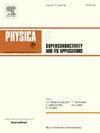Numerical approach to calculating binding requirements in high-field STM superconducting magnets
IF 1
3区 物理与天体物理
Q4 PHYSICS, APPLIED
Physica C-superconductivity and Its Applications
Pub Date : 2025-03-12
DOI:10.1016/j.physc.2025.1354670
引用次数: 0
Abstract
With advancing demands in frontier science, maximizing both the magnetic field strength and diameter of superconducting magnets has become increasingly significant. However, as these parameters grow, the complexity of mechanical analysis for the magnet intensifies. Enhancing the structural stability of superconducting magnets through binding wires is a crucial challenge. Therefore, this paper proposes a numerical method to determine the requirements of binding layers. The finite element numerical method was used to comprehensively analyze the stress generated during the winding, cooling, and excitation of the 12T STM superconducting magnet being developed by the High Magnetic Field Laboratory of China (CHMFL). The required winding forces and number of binding layers for the magnet was determined, effectively improving spatial utilization and preventing shifts or quenching through elasticity theory. This method may also be applied broadly to the mechanical analysis and binding layer determination of other large-aperture, high-field superconducting magnets.
计算高场STM超导磁体束缚要求的数值方法
随着前沿科学要求的不断提高,使超导磁体的磁场强度和直径最大化变得越来越重要。然而,随着这些参数的增加,磁体力学分析的复杂性也随之增加。通过结合导线提高超导磁体的结构稳定性是一个关键的挑战。因此,本文提出了一种确定绑定层要求的数值方法。采用有限元数值方法对中国强磁场实验室研制的12T STM超导磁体在绕组、冷却和激励过程中产生的应力进行了综合分析。通过弹性理论,确定了磁体所需的缠绕力和结合层数,有效提高了磁体的空间利用率,防止了磁体移位或淬火。该方法也可广泛应用于其他大孔径、高场超导磁体的力学分析和结合层的确定。
本文章由计算机程序翻译,如有差异,请以英文原文为准。
求助全文
约1分钟内获得全文
求助全文
来源期刊
CiteScore
2.70
自引率
11.80%
发文量
102
审稿时长
66 days
期刊介绍:
Physica C (Superconductivity and its Applications) publishes peer-reviewed papers on novel developments in the field of superconductivity. Topics include discovery of new superconducting materials and elucidation of their mechanisms, physics of vortex matter, enhancement of critical properties of superconductors, identification of novel properties and processing methods that improve their performance and promote new routes to applications of superconductivity.
The main goal of the journal is to publish:
1. Papers that substantially increase the understanding of the fundamental aspects and mechanisms of superconductivity and vortex matter through theoretical and experimental methods.
2. Papers that report on novel physical properties and processing of materials that substantially enhance their critical performance.
3. Papers that promote new or improved routes to applications of superconductivity and/or superconducting materials, and proof-of-concept novel proto-type superconducting devices.
The editors of the journal will select papers that are well written and based on thorough research that provide truly novel insights.

 求助内容:
求助内容: 应助结果提醒方式:
应助结果提醒方式:


